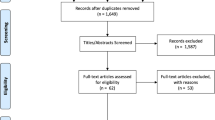Abstract
PURPOSE: This was a multicenter, randomized, controlled trial to compare the effectiveness of topical nitroglycerin with internal sphincterotomy in the treatment of chronic anal fissure. METHODS: Patients with symptomatic chronic anal fissures were randomly assigned to 0.25 percent nitroglycerintid or internal sphincterotomy. Both groups received stool softeners and fiber supplements and were assessed at six weeks and six months. RESULTS: Ninety patients were accrued, but 8 were excluded from the analysis because they refused internal sphincterotomy after randomization (6), the fissure healed before surgery (1), or a fissure was not observed at surgery (1). There were 38 patients in the internal sphincterotomy group (22 males; mean age, 40.3 years) and 44 patients in the nitroglycerin group (15 males; mean age, 38.7 years). At six weeks 34 patients (89.5 percent) in the internal sphincterotomy group compared with 13 patients (29.5 percent) in the nitroglycerin group had complete healing of the fissure (P=5 × 10−8). Five of the 13 patients in the nitroglycerin group relapsed, whereas none in the internal sphincterotomy group did. At six months fissures in 35 (92.1 percent) patients in the internal sphincterotomy group compared with 12 (27.2 percent) patients in the nitroglycerin group had healed (P=3 × 10−9). One (2.6 percent) patient in the internal sphincterotomy group required further surgery for a superficial fistula compared with 20 (45.4 percent) patients in the nitroglycerin group who required an internal sphincterotomy (P=9 × 10−6). Eleven (28.9 percent) patients in the internal sphincterotomy group developed side effects compared with 37 (84 percent) patients in the nitroglycerin group (P<0.0001). Nine (20.5 percent) patients discontinued the nitroglycerin because of headaches (8) or a severe syncopal attack (1). CONCLUSIONS: Internal sphincterotomy is superior to topical nitroglycerin 0.25 percent in the treatment of chronic anal fissure, with a high rate of healing, few side effects, and low risk of early incontinence. Thus, internal sphincterotomy remains the treatment of choice for chronic anal fissure.
Similar content being viewed by others
References
Oh C, Divino CM, Steinhagen RM. Anal Fissure. 20-year experience. Dis Colon Rectum 1995;38:378–82.
Pernikoff BJ, Eisenstat TE, Rubin RJ, Oliver GC, Salvati EP. Reappraisal of partial lateral internal sphincterotomy. Dis Colon Rectum 1994;37:1291–5.
Lewis TH, Corman ML, Prager ED, Robertson WG. Long-term results of open and closed sphincterotomy for anal fissure. Dis Colon Rectum 1988;31:368–71.
Kortbeek JB, Langevin JM, Khoo RE, Heine JA. Chronic fissure-in-ano: a randomized study comparing open and subcutaneous lateral internal sphincterotomy. Dis Colon Rectum 1992;35:835–7.
Marby M, Alexander-Williams J, Buchmann P,et al. A randomized controlled trial to compare anal dilatation with lateral subcutaneous sphincterotomy. Ann Surg 1990;212:235–8.
García-Aguilar J, Belmonte C, Wong WD, Lowry AC, Madoff RD. Openvs. closed sphincterotomy for chronic anal fissure: long-term results. Dis Colon Rectum 1996;39:440–3.
Klosterhalfen B, Vogel P, Rixen H, Mittermayer C. Topography of the inferior rectal artery: a possible cause of chronic, primary anal fissure. Dis Colon Rectum 1989;32:43–52.
Schouten WR, Briel JW, Auwerda JJ. Relationship between anal pressure and anodermal blood flow: the vascular pathogenesis of anal fissures. Dis Colon Rectum 1994;37:664–9.
Farouk R, Duthie GS, MacGregor AB, Bartolo DC. Sustained internal sphincter hypertonia in patients with chronic anal fissure. Dis Colon Rectum 1994;37:424–9.
O'Kelly T, Brading A, Mortensen N. Nerve mediated relaxation of the human internal anal sphincter: the role of nitric oxide. Gut 1993;34:689–93.
Loder PB, Kamm MA, Nicholls RJ, Phillips RK. Reversible chemical sphincterotomy by local application of glyceryl trinitrate. Br J Surg 1994;81:1386–9.
Gorfine SR. Treatment of benign anal disease with topical nitroglycerin. Dis Colon Rectum 1995;38:453–7.
Watson SJ, Kamm MA, Nicholls RJ, Phillips RK. Topical glyceryl trinitrate in the treatment of chronic anal fissure. Br J Surg 1996;83:771–5.
Lund JN, Scholefield JH. Glyceryl trinitrate is an effective treatment for anal fissure. Dis Colon Rectum 1997;40:468–70.
Bacher H, Mischinger HJ, Werkgartner G,et al. Local nitroglycerin for treatment of anal fissures: an alternative to lateral sphincterotomy? Dis Colon Rectum 1997;40:840–5.
Farouk R, Gunn J, Duthie GS. Changing patterns of treatment for chronic anal fissure. Ann R Coll Surg Engl 1998;80:194–6.
Hyman NH, Cataldo PA. Nitroglycerin ointment for anal fissures: effective treatment or just a headache? Dis Colon Rectum 1999;42:383–5.
Lund JN, Scholefield JH. A randomised, prospective, double-blind, placebo-controlled trial of glyceryl trinitrate ointment in treatment of anal fissure. Lancet 1997;349:11–4.
Notaras MJ. The treatment of anal fissure by lateral subcutaneous sphincterotomy: a technique and results. Br J Surg 1971;58:96–100.
Jorge JM, Wexner SD. The etiology and management of fecal incontinence. Dis Colon Rectum 1993;36:77–97.
Lachin JM. Introduction to sample size determination and power analysis for clinical trials. Control Clin Trials 1981;2:93–113.
Oettlé GJ. Glyceryl trinitratevs. sphincterotomy for treatment of chronic fissure-in-ano: a randomized, controlled trial. Dis Colon Rectum 1997;40:1318–20.
Skinner S, Polglase A, Le C, Winnett JD. The outcome for patients with anal fissure offered treatment with 0.2 percent glyceryl trinitrate ointment [meeting abstract]. Dis Colon Rectum 1999;42:A33.
Pitt J, Dawas K, Dawson P. Disappointing results of glyceryl trinitrate ointment in the treatment of chronic fissure-in-ano in a district general hospital [meeting abstract]. Dis Colon Rectum 1999;42:A12–3.
Author information
Authors and Affiliations
Additional information
Supported in part by a grant from The American Society of Colon and Rectal Surgeons Research Foundation.
Dr. Richard was supported by a fellowship from the Crohn's and Colitis Foundation of Canada.
Nitrol® nitroglycerin ointment was provided by Rhone Poulenc Rorer, Canada; Prodium® by Searle Canada; and Colace® by Roberts Pharmaceuticals, Canada.
Read at The American Society of Colon and Rectal Surgeons' 100th Anniversary and Tripartite Meeting, Washington, D.C., May 1 to 6, 1999.
About this article
Cite this article
Richard, C.S., Gregoire, R., Plewes, E.A. et al. Internal sphincterotomy is superior to topical nitroglycerin in the treatment of chronic anal fissure. Dis Colon Rectum 43, 1048–1055 (2000). https://doi.org/10.1007/BF02236548
Issue Date:
DOI: https://doi.org/10.1007/BF02236548




